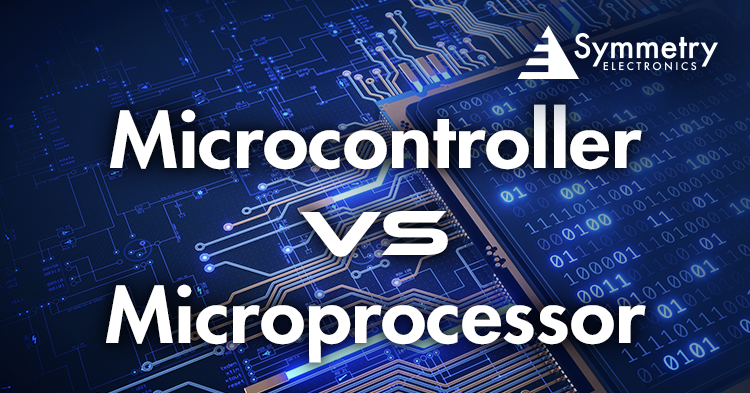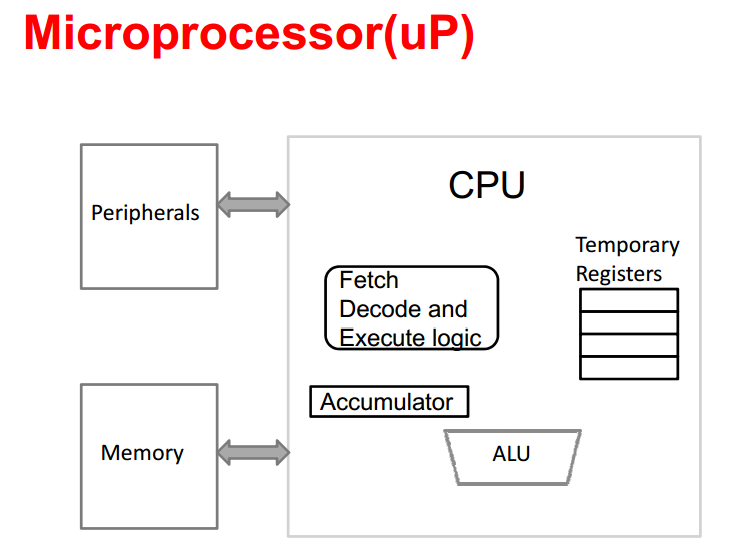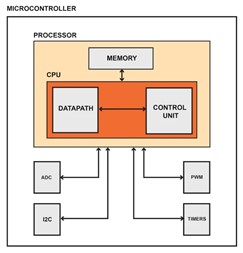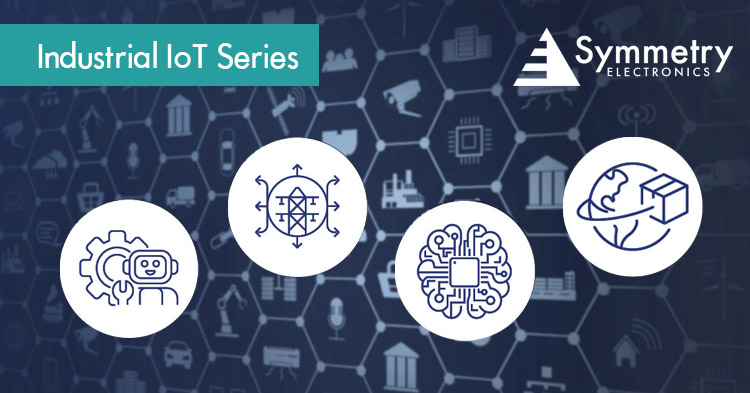- Home
- Symmetry Blog
- Microprocessor vs Microcontroller
Microprocessor vs Microcontroller
About Jari Haiston

Microcontrollers (MCUs) are the center of computing. MCUs are a part of almost every electronic device we use from desktops and laptops to smartphones, calculators, medical devices, and wearables. In fact, there are so many applications for MCUs, that it would be difficult (and lengthy) to list every application in one article. In comparison, microprocessors (MPUs) lie at the center of embedded systems and control operations in many functions of computing. MCUs and MPUs are used to organize and optimize computing systems in electronic devices, but their nuanced differences matter when selecting the appropriate processing technology to incorporate into your device.
Inventor of the Microprocessor:
The term microprocessor, sometimes referred to as a logic chip, was first coined by Viatron Computer Systems in 1968 in indication of their System 21 machines, but has reference dates all the way back to 1951. However, there is controversy over which of the many contenders actually deserves credit for having ‘invented’ the microprocessor.
A microprocessor has three basic functions:
- Perform mathematical operations like addition, subtraction, multiplication, and division by utilizing its Arithmetic/Logic Unit (ALU).
- Move data from one location to another.
- Make decisions and change instruction sets based on decisions made.
The layout of a microprocessor (Figure 1) includes and address bus (8, 16, or 32 bits wide) that enables address to be sent to memory, a data bus (8, 16, or 32 bits wide) that enables data to be sent or received to/from memory, a Read (RD) and Write (WR) line that allows memory to receive direction, a clock line to set the processors pulse sequence, a reset line that allows the processor to be reset to ‘zero.’
Figure 1: Block Diagram of a microprocessor
Source: Engineering Insider
What is a Microcontroller?
As opposed to an MPU, an MCU microcontroller provides additional functionality surrounding a basic processor core to enabled more efficient solutions for specific applications. MCUs are compact, highly integrated computer systems that consist of (Figure 2) a central processing unit (CPU) and memory (if desired). Peripherals like data converters, clock generation, timing solutions, analog signal processing, I/O components, and serial communications are also included internally in MCUs. MCU support circuitry includes debug, interrupts, clock generation modules, and power-supply circuitry.
Embedded Microcontroller vs Microprocessors:
The main differences between embedded microprocessors and microcontrollers include:
Microcontroller (MCU)
- Center of an embedded system
- Integrates external processor, I/O components, and internal memory
- MCU’s small footprint makes it ideal for compact systems
- Cost-efficient
- Many MCUs are equipped with power-saving features
- MCUs incorporate a higher number of registers, making programs easier to write than those of MPUs
- Increased speed due to internal components and instruction
Microprocessor (MPU)
- Center of a computer system
- Has a larger footprint than MCUs as memory must be connected externally
- High power consumption due to connected external components
- More memory-based operations
- Mainly utilized in personal computers
- May not feature power-saving modes
- Generally slower than MCUs
Source: Electronics For You
While MPUs and MCUs are both utilized to enhance and optimize computing operations, when determining which computing solution for your device design, consider the size, speed, and computing requirements of your device. Interestingly enough, some microprocessors are microcontrollers, but these types of combined units control small, simple devices like greeting cards featuring audio or flashlights. Design complexity, application, and use case(s) will be the ultimate considerations when determining your computing solution.
Need help selecting the ideal computing technology for your device design? Reach out to our team of expert Applications Engineers at Symmetry Electronics for a free consultation to discuss your product development needs.



.jpg)